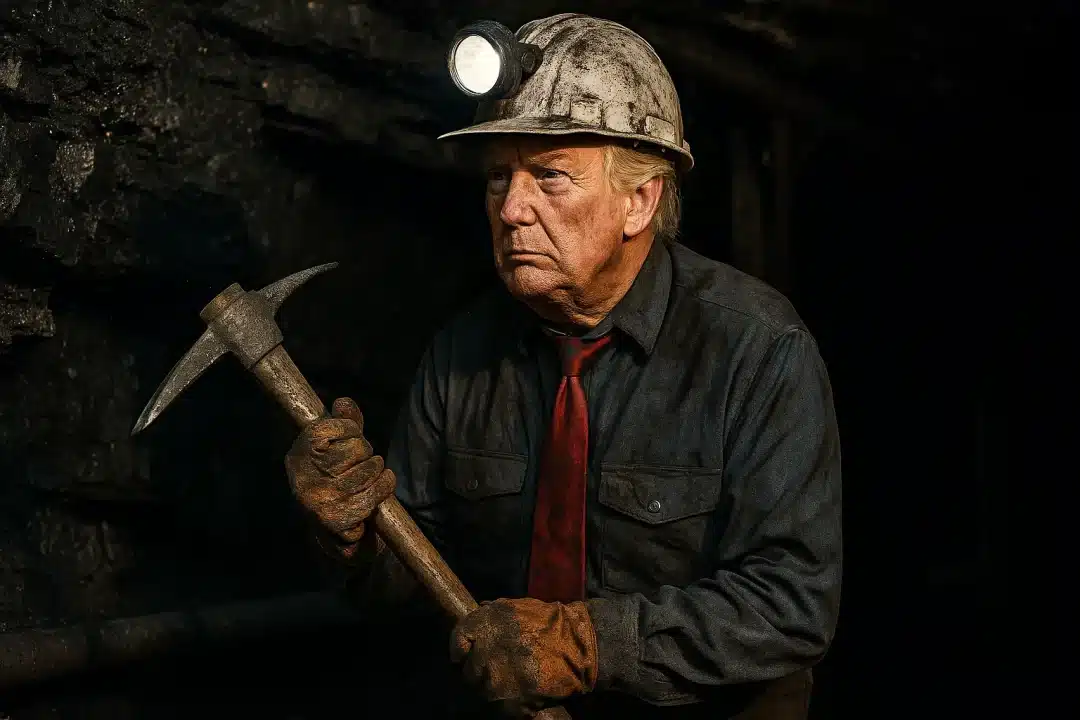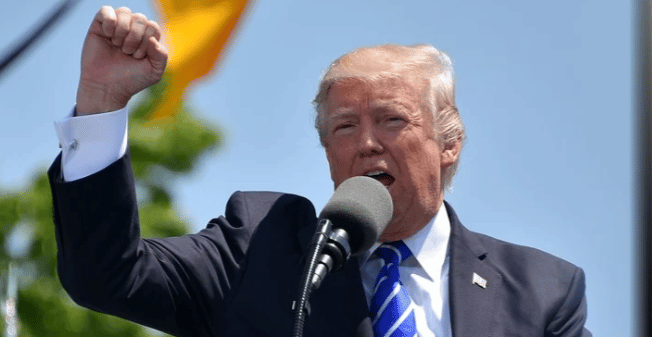
President Donald Trump is ramping up his administration’s efforts to revive the American coal industry with a new executive order set to be signed Tuesday. The directive aims to expand coal mining, ease environmental regulations, and promote coal as a crucial energy source for the nation’s surging artificial intelligence (AI) sector.
The executive order will instruct federal agencies to eliminate barriers to coal leasing and development on federal lands, fast-track environmental reviews, and explore ways coal-fired power could support the growing energy demands of AI data centers.
The administration also intends to classify coal as a “critical mineral,” a designation that could accelerate mine approvals and bolster domestic production.
“America has more clean, beautiful coal than anyone else,” Trump declared Monday during an Oval Office appearance alongside Israeli Prime Minister Benjamin Netanyahu. “We’re not just bringing coal back — we’re powering the future with it.”
Coal as a Backbone of AI Energy Infrastructure?
The resurgence of coal under Trump comes amid a dramatic rise in electricity demand driven by AI and cloud computing infrastructure. Administration officials, including Energy Secretary Chris Wright and Interior Secretary Doug Burgum, argue that coal plants — which can operate continuously unlike intermittent renewable sources — offer a reliable solution.
“These are clean coal plants, and they’ve been the most regulated segment of our energy industry,” Burgum said last month. “We need them to stay open.”
Coal’s Steady Decline — and Trump’s Past Struggles

Despite the administration’s bullish stance, analysts remain skeptical about a true coal comeback.
The U.S. coal sector has been in steady decline for over two decades, with utilities favoring cheaper, cleaner energy sources like natural gas, wind, and solar. In 2011, coal generated nearly half of U.S. electricity; in 2024, it accounted for just 15%.
During Trump’s first term, more coal capacity was retired than under President Joe Biden, despite the rollback of numerous environmental protections and efforts to prolong plant operations.
Seventy-five coal-fired power plants closed, and the industry lost approximately 13,000 jobs during Trump’s initial four years in office.
“The main issue is that most of our coal plants are old and expensive to maintain,” said Seth Feaster, a data analyst with the Institute for Energy Economics and Financial Analysis. “No one’s planning to build new ones. It’s a hard trajectory to reverse.”
Environmental, Economic, and Grid Concerns
Coal is the dirtiest fossil fuel, contributing nearly 40% of global industrial CO₂ emissions and releasing pollutants linked to heart and respiratory diseases. Critics argue that Trump’s renewed coal push is economically and environmentally regressive — and could cost consumers billions.
Earlier this year, PJM Interconnection, which manages the Mid-Atlantic power grid, ordered two aging fossil fuel plants to remain online until 2029 to mitigate blackout risks — a move expected to cost utility customers over $720 million.
“Trump is clinging to yesterday’s energy,” said Kit Kennedy of the Natural Resources Defense Council. “These coal plants are outdated, expensive, and unreliable. We should be investing in a cleaner, more resilient grid — not burdening ratepayers with obsolete infrastructure.”
Still, the Trump administration is rolling back President Biden’s climate-focused regulations, including a sweeping EPA rule that would have forced coal plants to capture or bury carbon emissions by 2039.
“The war on coal is over,” Trump said in a statement released by the White House. “We’re bringing back energy independence, grid stability, and American jobs.”
Looking Ahead: Can Trump’s Coal Strategy Succeed?
Trump’s strategy hinges on coal’s ability to meet new energy demands without triggering grid instability. But many experts question whether older coal plants can adapt to modern standards or compete economically with newer, cleaner technologies.
Even if some plants remain open longer, a broad coal revival remains unlikely. Most utilities have already charted transition plans away from coal, citing lower costs and regulatory uncertainty.
As the Trump administration seeks to link coal with the future of AI, the broader question remains: Can one of the dirtiest energy sources find a new role in a high-tech era — or is this a politically fueled effort to revive an industry long in decline?
